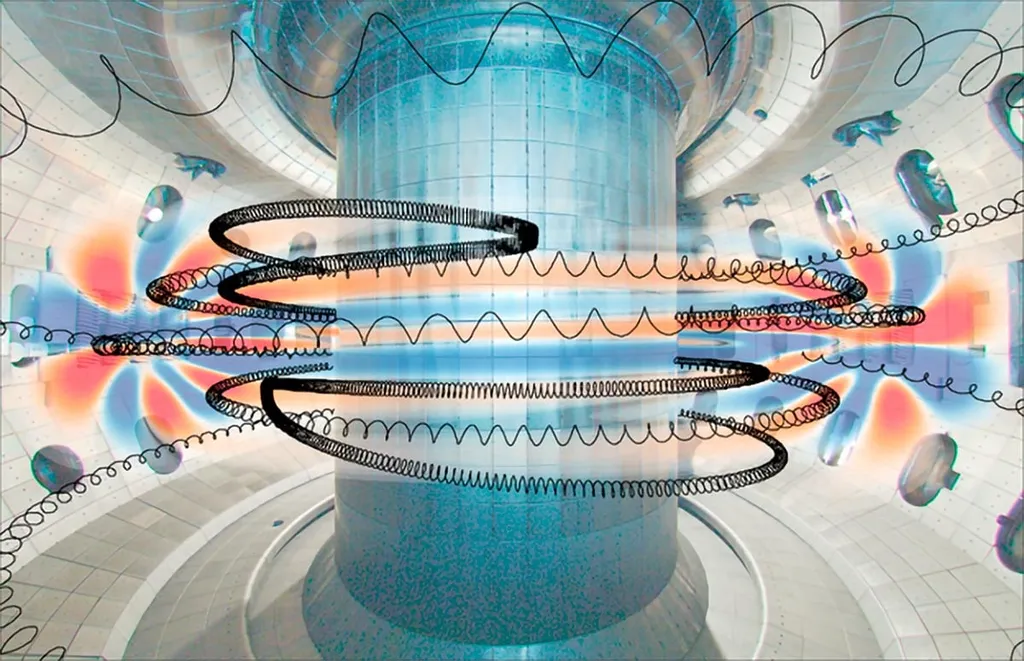In a significant stride towards understanding and harnessing fusion energy, researchers have delved into the intricate dance of energetic particles and plasma waves within a tokamak, a device that confines hot plasma in a doughnut-shaped magnetic field to sustain a controlled fusion reaction. The study, led by Dr. Y. Todo of the National Institute for Fusion Science in Japan, and published in the journal *Fusion Energy* (formerly known as *Nuclear Fusion*), sheds light on the behavior of energetic particles in a burning plasma, a critical aspect for the future of fusion power.
The research focuses on energetic particle-driven Alfvén eigenmodes (AEs) and the redistribution of energetic particles in phase space. Alfvén eigenmodes are specific types of plasma waves that can be excited by energetic particles, such as alpha particles produced in fusion reactions. Understanding these phenomena is crucial for the design and operation of future fusion reactors, including ITER, the world’s largest tokamak currently under construction in France.
Dr. Todo and his team employed advanced kinetic-magnetohydrodynamic (MHD) hybrid simulations to investigate these processes. They found that different types of AEs dominate in different phases of the plasma’s evolution. “In the early, linear growth phase, multiple toroidal AEs (TAEs) with a specific toroidal mode number are the most unstable,” explained Dr. Todo. “However, in the nonlinear phase, reversed shear AEs (RSAEs) with low mode numbers take over.”
The simulations also revealed substantial redistribution of energetic particles in phase space, with local flattening regions forming around the resonances with the AEs. As the amplitudes of the AEs increase, these resonance regions broaden and overlap, leading to the formation of a single flattened region. This process is driven by the interaction between the waves and the particles, which can significantly impact the confinement and transport of energetic particles within the plasma.
One of the most intriguing findings is the role of thermal ions in stabilizing AEs. “By analyzing the redistribution in phase space, we demonstrated the stabilizing effect of thermal ions on AEs,” said Dr. Todo. This insight could have significant implications for the design of future fusion reactors, as it suggests that careful control of the plasma’s thermal ion population could help mitigate the destabilizing effects of energetic particles.
The research also highlights the importance of understanding the phase space distribution of energetic particles, as this can greatly influence the overall performance of a fusion reactor. By gaining a deeper understanding of these processes, scientists can work towards optimizing the design and operation of future fusion devices, bringing us one step closer to the realization of clean, abundant, and sustainable fusion energy.
As the world grapples with the challenges of climate change and energy security, the insights gained from this research could prove invaluable in shaping the future of the energy sector. By unlocking the power of fusion, we can look forward to a future powered by clean, safe, and virtually limitless energy.

